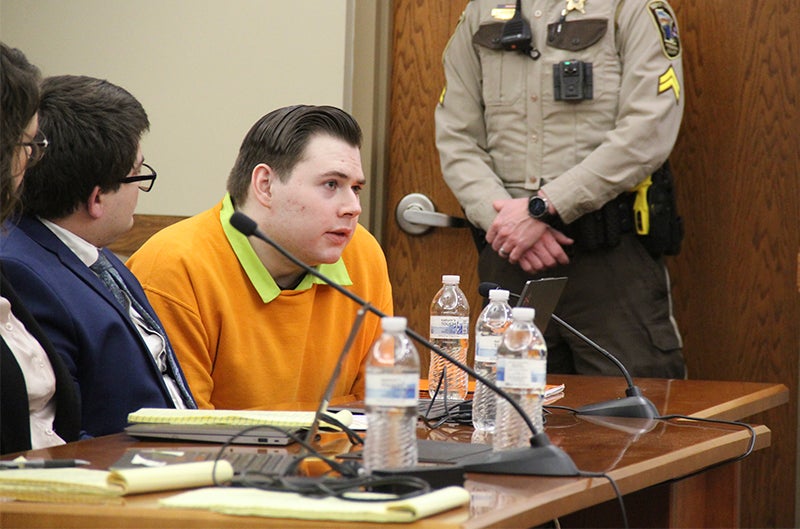Court of Appeals affirms sentence of shooter at Shady Oaks
Published 2:24 pm Thursday, June 20, 2024

- Devin Weiland speaks briefly before Judge Christy Hormann issues a sentence in his case in February 2023. Sarah Stultz/Albert Lea Tribune
|
Getting your Trinity Audio player ready...
|
The Minnesota Court of Appeals this week affirmed the sentence of Devin Weiland of Albert Lea, who in February 2023 was sentenced to a combined 50 years in prison after shooting three people during an eight-hour standoff in November 2020 at Shady Oaks apartments.
The opinion, released Monday, stated the district court did not err by imposing three consecutive sentences for the attempted murder of the three individuals who were shot, which included one Albert Lea police officer.
District Court Judge Christy Hormann said at the time of the sentencing she hoped the three consecutive sentences would capture the effect Weiland’s actions had that day, noting Weiland fired rounds out of his apartment into vehicles, a nearby home and even into an apartment across the hall from his own during the course of the standoff. She said he fired up to 90 rounds during the standoff and was lucky more people weren’t injured.
Weiland stated he had attended a party in another unit on the evening of Nov. 28, 2020, and after a conflict between Weiland and some other attendees at the party, he returned to his apartment “in case anything did happen.” He then discharged one of his firearms inside his apartment.
Shortly after, he called 911 and reported hearing either a firecracker or gunshot near his building and requested an officer. He later stated he was concerned police would take away his firearms based on the discharge of the firearm inside of the apartment.
Evidence during the trial showed that Weiland summoned law enforcement to the complex in the morning of Nov. 29, 2020, and when the first officer arrived, Weiland began firing shots out the window from his apartment on the third floor, striking the officer in the chest with a rifle.
Another man, who heard noises, left the Shady Oaks building because he was concerned about his vehicle, and was shot in the arm. A third man, who lived across the street from the complex, was struck by a bullet through his car door as he drove by on his way to work.
Weiland in his appeal argued there was insufficient evidence to prove the elements of intent and premeditation beyond a reasonable doubt. He also argued that the district court erred when it entered in three convictions for second-degree assault with a dangerous weapon based on the same conduct as the attempted first-degree murder convictions.
The opinion stated that while “Weiland acknowledges that the facts surrounding the incident are largely undisputed … he contests whether the evidence is sufficient to prove beyond a reasonable doubt that he intended to cause the death of the peace officer and acted with premeditation and intent to cause the death of the two civilians. He contends that the evidence showed that his intent was to commit “suicide by cop.’”
When proving intent and premeditation, the court said it could consider factors such as number of wounds, whether the wounds were inflicted on vital areas and the passage of time between the infliction of wounds.
Weiland argued he intended to only incite fear to provoke officers to shoot and kill him.
“We are not convinced,” the opinion states.
“Weiland made specific efforts to target people throughout the night, including shooting at the head of the driver of the armored vehicle,” the court said. “As for premeditation, the circumstances proved show that Weiland loaded his unloaded guns at the start of the incident.”
His ammunition clip held only 10 bullets, and he had to decide multiple times to reload his firearm between every 10 shots.
“The circumstantial evidence is sufficient to prove that Weiland acted with both intent and premeditation,” the opinion states.
Weiland also argued that the district court violated the constitutional separation of powers and the bar on double jeopardy by imposing separate sentences for the attempted murder of each of his victims.
The court stated it did not review whether Weiland’s offenses arose from the same behavioral incident because multiple sentences are allowed for offenses that have multiple victims. The rule does not violate the bar on double jeopardy.





